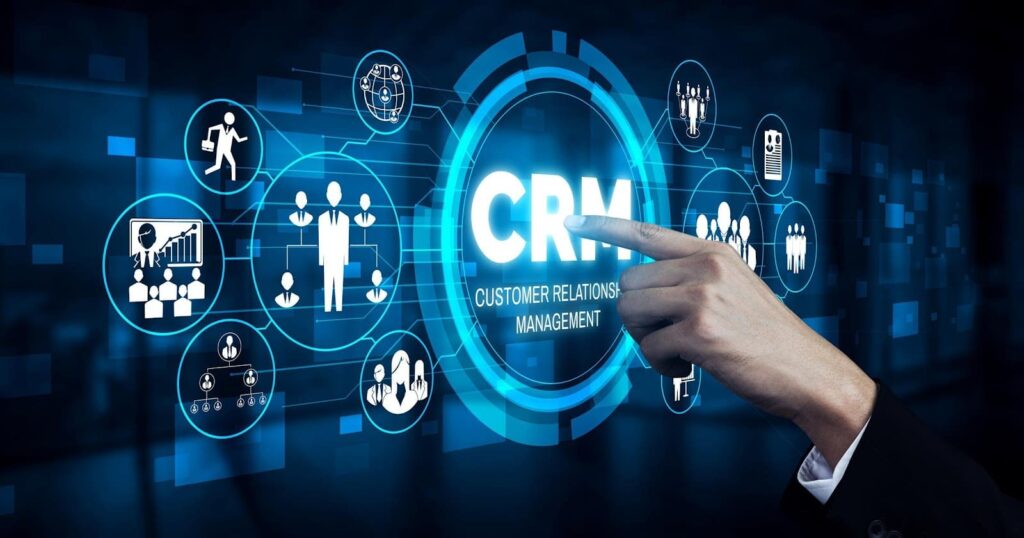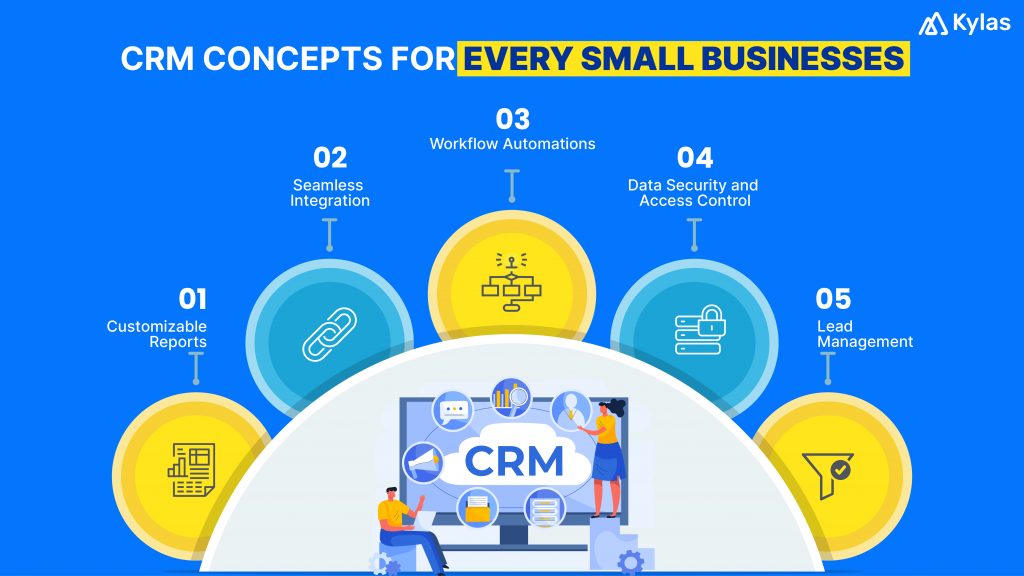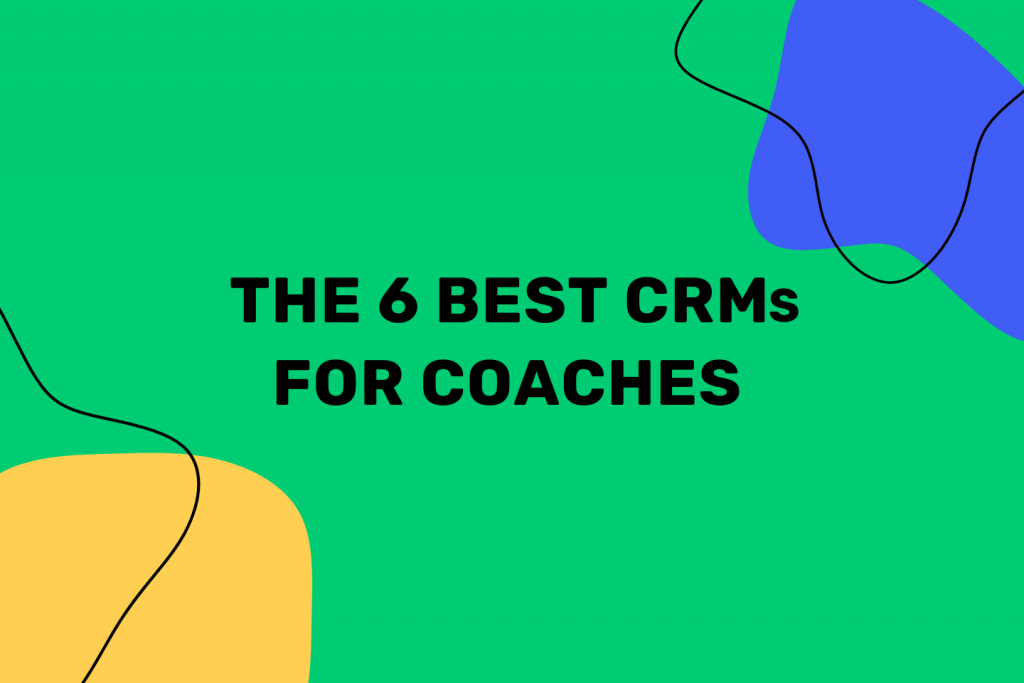
Supercharge Your Small Retail Business: Why CRM is the Secret Weapon You Need
Running a small retail business is a thrilling, often chaotic, adventure. You’re juggling inventory, managing staff, crafting marketing campaigns, and, most importantly, trying to keep your customers happy. In this fast-paced environment, it’s easy for things to slip through the cracks. That’s where a Customer Relationship Management (CRM) system comes in – your new secret weapon for success. This article delves into the world of CRM, specifically tailored for small retail businesses, exploring why it’s essential, how it works, and how you can leverage it to boost your bottom line and build lasting customer relationships.
Why Your Small Retail Business Needs a CRM System
You might be thinking, “CRM? Isn’t that for big corporations?” The truth is, CRM is arguably *more* crucial for small businesses. Here’s why:
- Enhanced Customer Understanding: In the hustle and bustle of retail, it’s easy to lose sight of who your customers are. A CRM provides a centralized hub to store and analyze customer data – purchase history, preferences, contact information, and more. This allows you to truly *know* your customers on a deeper level.
- Personalized Customer Experiences: Armed with customer insights, you can tailor your interactions. Imagine sending a birthday email with a special offer, recommending products based on past purchases, or remembering a customer’s usual order. Personalization makes customers feel valued and appreciated, fostering loyalty.
- Improved Sales and Marketing Efficiency: CRM streamlines your sales and marketing efforts. You can segment your customer base, target specific groups with relevant promotions, and track the performance of your campaigns. This leads to more effective marketing and a higher return on investment (ROI).
- Streamlined Operations: A CRM can automate repetitive tasks, freeing up your time to focus on what matters most: serving your customers and growing your business. This includes tasks like sending follow-up emails, managing customer inquiries, and tracking sales leads.
- Better Customer Service: Providing excellent customer service is critical for any retail business. A CRM helps you track customer interactions, resolve issues efficiently, and ensure that no customer feels ignored.
- Increased Revenue: Ultimately, the goal of any business is to generate revenue. By improving customer understanding, personalization, and operational efficiency, a CRM system can directly contribute to increased sales and profits.
Key Features to Look for in a CRM for Small Retail Businesses
Not all CRM systems are created equal. When choosing a CRM for your small retail business, consider these essential features:
1. Contact Management
This is the foundation of any CRM. It allows you to store and manage customer contact information, including names, addresses, phone numbers, email addresses, and social media profiles. Look for a system that allows you to easily add, update, and search for contacts.
2. Sales Tracking
Track your sales pipeline, from initial leads to closed deals. This includes recording sales activities, such as calls, emails, and meetings, as well as tracking the value of each deal. This feature helps you monitor your sales performance and identify areas for improvement.
3. Marketing Automation
Automate repetitive marketing tasks, such as sending email campaigns, managing social media posts, and nurturing leads. This frees up your time to focus on other aspects of your business. Some CRMs also offer features like landing page creation and lead capture forms.
4. Customer Service and Support
Manage customer inquiries, track support tickets, and provide excellent customer service. This includes features like a knowledge base, live chat, and a help desk ticketing system. This ensures that your customers receive timely and effective support.
5. Reporting and Analytics
Gain insights into your customer behavior, sales performance, and marketing effectiveness. This includes features like dashboards, reports, and analytics tools. This data allows you to make informed decisions and optimize your business operations.
6. Integration Capabilities
Ensure that the CRM integrates with other tools you use, such as your point-of-sale (POS) system, e-commerce platform, email marketing software, and social media platforms. This creates a seamless flow of information and eliminates the need for manual data entry.
7. Mobile Accessibility
Access your CRM data from anywhere, anytime. This is especially important for retail businesses, where you may need to access customer information on the go. Look for a CRM that offers a mobile app or a responsive web interface.
8. User-Friendly Interface
Choose a CRM that is easy to use and navigate. The system should be intuitive and require minimal training. This will ensure that your team can quickly adopt the system and start using it effectively.
Choosing the Right CRM System for Your Retail Business
With so many CRM options available, selecting the right one can feel overwhelming. Here’s a step-by-step guide to help you make the right choice:
1. Define Your Needs
Before you start looking at CRM systems, take the time to define your specific needs and goals. What are your biggest pain points? What are your key priorities? What features are essential for your business? Consider the size of your business, your budget, and the complexity of your operations.
2. Research CRM Providers
Once you have a clear understanding of your needs, start researching CRM providers. Read online reviews, compare features, and explore pricing options. Consider both established players and newer, more specialized providers. Some popular options include:
- HubSpot CRM: A popular and user-friendly CRM with a free version, suitable for small businesses.
- Zoho CRM: A comprehensive CRM with a wide range of features, offering both free and paid plans.
- Salesforce Sales Cloud: A powerful CRM with advanced features, ideal for growing businesses.
- Pipedrive: A sales-focused CRM that is known for its ease of use and visual interface.
- Freshsales: A sales CRM built for high-velocity teams.
3. Consider Your Budget
CRM systems range in price from free to several hundred dollars per user per month. Determine your budget and choose a system that fits your financial constraints. Remember to factor in the cost of implementation, training, and ongoing maintenance.
4. Evaluate Features
Compare the features of different CRM systems and choose the one that best meets your needs. Pay close attention to the features that are most important for your business, such as contact management, sales tracking, and marketing automation.
5. Test Drive the System
Most CRM providers offer free trials or demos. Take advantage of these opportunities to test drive the system and see if it’s a good fit for your business. This will give you a hands-on feel for the interface, features, and functionality.
6. Consider Integration
Make sure the CRM system integrates with the other tools you use, such as your POS system, e-commerce platform, and email marketing software. This will streamline your operations and eliminate the need for manual data entry.
7. Get Training and Support
Once you’ve chosen a CRM system, make sure you and your team receive adequate training. The provider should offer training materials, tutorials, and support to help you get started and troubleshoot any issues. Look for a CRM provider that provides excellent customer support.
Implementing Your CRM System: A Practical Guide
Choosing the right CRM is just the first step. Successful implementation is crucial for realizing the benefits. Here’s a practical guide to help you get started:
1. Plan Your Implementation
Develop a detailed implementation plan. This should include a timeline, a budget, and a list of tasks. Identify the key stakeholders involved in the implementation process and assign responsibilities. Determine how you will migrate your existing data to the new CRM system.
2. Data Migration
Carefully migrate your existing customer data to the CRM system. Ensure that the data is accurate and complete. Clean up any duplicate records and standardize the data format. This is a crucial step to ensure the system works effectively from the start.
3. Customize Your CRM
Customize the CRM to meet your specific needs. This may include adding custom fields, creating workflows, and configuring reports. Tailor the system to match your business processes and workflows.
4. Train Your Team
Provide comprehensive training to your team on how to use the CRM system. This should include hands-on training, tutorials, and user guides. Make sure everyone understands how to use the system effectively.
5. Test the System
Thoroughly test the CRM system before going live. This includes testing all features and functionalities. Identify and fix any bugs or issues before you start using the system for your daily operations.
6. Go Live
Once you’re confident that the system is ready, go live. Communicate the launch to your team and provide ongoing support. Monitor the system’s performance and make adjustments as needed.
7. Ongoing Optimization
Continuously optimize your CRM system. Regularly review your data, reports, and workflows. Make improvements to the system to ensure that it continues to meet your evolving needs. Seek feedback from your team and customers.
Maximizing the Benefits of Your CRM: Best Practices
Once your CRM is up and running, here are some best practices to help you maximize its benefits:
1. Data Quality is Key
Ensure that your customer data is accurate, complete, and up-to-date. Regularly clean and update your data to maintain its integrity. Inaccurate data will lead to poor decisions and missed opportunities.
2. Use the CRM Consistently
Make sure your team uses the CRM consistently. Encourage them to enter all customer interactions and update customer information regularly. Consistent usage is essential for getting the most value from the system.
3. Analyze Your Data
Regularly analyze your CRM data to gain insights into your customer behavior, sales performance, and marketing effectiveness. Use the data to make informed decisions and optimize your business operations. Look for trends and patterns.
4. Personalize Your Interactions
Use the CRM data to personalize your interactions with customers. Tailor your marketing messages, customer service interactions, and sales pitches to meet their specific needs and preferences. This will make customers feel valued and appreciated.
5. Automate Tasks
Automate repetitive tasks, such as sending follow-up emails, managing customer inquiries, and tracking sales leads. This will free up your time to focus on other aspects of your business. Use automation to improve efficiency and productivity.
6. Integrate with Other Tools
Integrate your CRM with other tools you use, such as your POS system, e-commerce platform, and email marketing software. This will create a seamless flow of information and eliminate the need for manual data entry.
7. Get Feedback and Improve
Regularly solicit feedback from your team and customers. Use their feedback to improve your CRM system and your customer experience. Continuously strive to make improvements.
Real-World Examples: How Retail Businesses are Using CRM
Let’s look at how some retail businesses are leveraging CRM to achieve impressive results:
- A Local Boutique: A small clothing boutique uses its CRM to track customer purchase history, size preferences, and style preferences. They send personalized emails to customers with new arrivals that match their style, resulting in a 20% increase in sales. They also use the CRM to manage customer loyalty programs, offering exclusive discounts and early access to sales.
- A Specialty Food Store: A gourmet food store uses its CRM to track customer dietary restrictions and allergies. They send personalized recipe recommendations and product suggestions, boosting customer engagement and repeat business. They also use the CRM to manage online orders and provide excellent customer service, leading to positive reviews and increased customer satisfaction.
- A Hardware Store: A hardware store utilizes its CRM to track customer projects and home improvement needs. They send targeted promotions on relevant products and offer personalized advice, increasing customer loyalty and driving sales. They also use the CRM to manage warranties and provide efficient customer support.
Overcoming Challenges: Common Pitfalls and How to Avoid Them
While CRM offers many benefits, there are also potential challenges. Here’s how to avoid common pitfalls:
- Lack of User Adoption: One of the biggest challenges is getting your team to adopt the CRM. To overcome this, provide thorough training, make the system easy to use, and demonstrate its value. Show how the CRM will make their jobs easier and help them achieve their goals.
- Poor Data Quality: Inaccurate or incomplete data can undermine the effectiveness of your CRM. Implement data quality controls, regularly clean and update your data, and train your team on data entry best practices.
- Choosing the Wrong CRM: Selecting a CRM that doesn’t meet your needs can be a costly mistake. Take the time to define your needs, research different options, and test drive the system before making a decision.
- Insufficient Training: Without proper training, your team won’t be able to use the CRM effectively. Invest in comprehensive training and provide ongoing support.
- Ignoring Customer Feedback: Don’t be afraid to ask for feedback. Regularly solicit feedback from your team and customers to improve your CRM system and your customer experience.
The Future of CRM in Retail: Trends to Watch
The world of CRM is constantly evolving. Here are some trends to watch:
- Artificial Intelligence (AI): AI is being used to automate tasks, personalize customer interactions, and provide insights into customer behavior. Expect to see more AI-powered CRM features in the future.
- Mobile CRM: Mobile CRM is becoming increasingly important, allowing retail businesses to access customer data and manage interactions on the go.
- Social CRM: Social media is playing a growing role in customer interactions. Social CRM integrates social media data with CRM data to provide a more complete view of the customer.
- Personalization: Personalization is becoming increasingly important, with customers expecting tailored experiences. CRM systems are helping businesses deliver highly personalized interactions.
- Integration: Seamless integration with other tools is becoming essential. Businesses want CRM systems that integrate with their POS systems, e-commerce platforms, and other tools.
Conclusion: Embrace CRM and Thrive in Retail
In today’s competitive retail landscape, a CRM system is no longer a luxury – it’s a necessity. By embracing CRM, small retail businesses can gain a deeper understanding of their customers, personalize their interactions, improve sales and marketing efficiency, streamline operations, and ultimately, increase revenue. By following the tips and best practices outlined in this article, you can choose the right CRM for your business, implement it successfully, and unlock its full potential. So, take the plunge, invest in a CRM, and watch your small retail business thrive!


